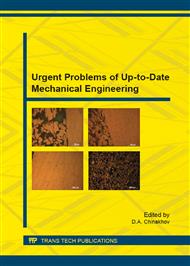p.495
p.501
p.505
p.512
p.518
p.522
p.526
p.531
p.535
The Influence of Power Mode on Ir-Leds Resistance to the Irradiation with Fast Neutrons
Abstract:
In this paper we present the results of investigation of the power mode influence on the resistance to fast neutron irradiation of IR-LEDs based on AlGaAs heterostructures. The investigation shows that there are 2 stages of LED emissive power lowering. At the first stage the emissive power decreases due to reorganization of existing defective structure. At the second stage it happens as the result of radiation defects introduction. The rate of defects introduction that influences the emissive power lowering at the first stage in the space charge region of the embedded p-n junction is higher than in the neutral region. The forward current flowing under irradiation results in partial annealing of introduced defects and consequently to resistance growth at the first stage of emissive power lowering. The LED power mode doesn’t contribute essentially to the power lowering at the second stage while observed difference is due to decrease of contribution of the first stage to the whole process of emissive power lowering.
Info:
Periodical:
Pages:
518-521
Citation:
Online since:
June 2015
Authors:
Keywords:
Price:
Сopyright:
© 2015 Trans Tech Publications Ltd. All Rights Reserved
Share:
Citation:


